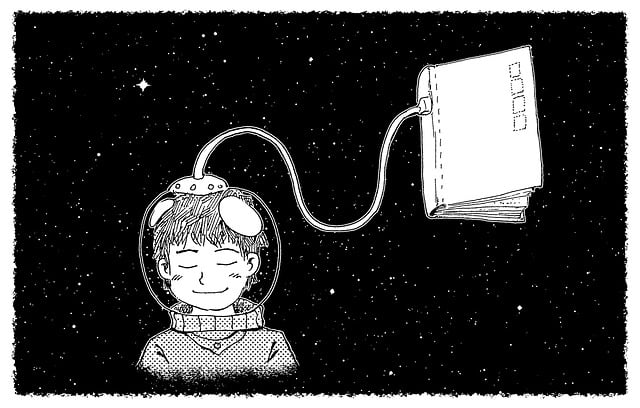7 Tips For Writing an Effective Personal Narrative
In its basic form, a personal narrative is a story told in the first person where you reflect about a meaningful experience, including your feelings about it, your learnings, your journey, and so on.
It usually has to do with something that has been transformational, unique in your life that caused you to rethink or reconsider your point of view, typically resulting in personal growth, professional growth, or both.
These experiences typically involve facing painful circumstances that have forced you to change your beliefs in some unexpected way in order to overcome adversity.
What a personal narrative is not is a depiction of mundane events that are commonplace in people’s lives and therefore not really significant or memorable.
The goal of a personal narrative is to share your journey of growth with others to inspire them, uplift them, motivate them, and show them what might be possible in their own lives by learning lessons from your experience.
What Makes a Good Personal Narrative?

Now, for a personal narrative to be effective, it needs to be properly structured as a story and not be just a random collection of thoughts and experiences without a clear thread.
If your story is well-organized and easy to follow, you’ll be able to hook your readers from beginning to end without risking losing their attention and missing an opportunity to add value to their lives.
You should also make sure to include descriptive language that will allow your reader to imagine how you felt in each situation.
So, don’t limit your narrative to a sequence of causes and effects. Paint instead a vivid picture that allows your readers to feel they’re witnessing your life story, taking advantage of all five senses to connect with their emotions.
Make sure your structure includes a clear beginning middle and end, as well as transitions between the different sections.
The beginning needs to establish your core idea in your personal narrative and hook your readers.
The middle needs to develop your central idea using descriptive language to define your story, the setting, the characters (you and others) and the plot.
Finally, the end needs to summarize any lessons learned, relate your core theme back to your readers’ lives, and include a call to action.
What Is The Most Powerful Element In a Personal Narrative?

The most powerful element in a personal narrative is the emotional connection that you’re able to establish with your readers.
Your story should engage their senses and feelings in addition to their rational thoughts, allowing them to live vicariously through your experiences.
To achieve this, it’s important that you be honest and open about how those experiences have impacted you, and never be afraid to show your vulnerability. Doing so will give your readers permission to accept their own.
Writing a personal narrative takes time, effort, and emotional fortitude, but can also be extremely liberating and rewarding for both author and reader.
How Can I Start a Personal Narrative?
When starting your personal narrative, it’s important that you choose an interesting life event that you can write about with passion. This should be a circumstance that involves a significant lesson or a teaching moment that you wish to share with others.
Once you’ve chosen your event, think about how you want to structure your narrative. This will help you outline your story and ensure that each section transitions smoothly into the next, from the introduction to the various body sections to the conclusion.
Once your outline is complete, just start writing and don’t worry if your content isn’t perfect right away. Personal narratives often take multiple drafts before they feel solid.
Just make sure to use descriptive language, include plenty of detail, and focus on connecting emotionally with your reader. With time and practice, you’ll get naturally good at it. After all, you’re talking about your life and not someone else’s.
How to Write a Personal Narrative (7 Tips)

Here are seven tips for helping you write a personal narrative that’s effective:
1. Start by brainstorming life experiences you want others to benefit from
When brainstorming topics for a personal narrative, choose something that you’re passionate about communicating to others. You want to make your readers feel like they are experiencing your story firsthand.
You want them to learn from your transformational experience so they don’t have to suffer the consequences themselves.
In other words, give them a heads up so they can, a) avoid the pain you went through to get to the other side or b) relieve their pain if they’re currently going through a similar experience.
2. Organize your ideas into a clear structure that helps them navigate your emotional journey with ease
A clear structure will ensure that your reader can easily follow your story and understand the main points you’re trying to make.
Also, a story well told will capture your reader’s attention right from the initial hook in your introduction and never let go until your conclusion. And even then, it’ll leave them pondering with one or many “aha” moments after they’re done reading.
Finally, a well structured personal narrative is not premised on entertaining your audience, like a piece of fiction would (although, some parts may be entertaining to read) but instead on changing minds and hearts, self-discovery, personal growth and transformation.
3. Write honestly so that the reader can connect with your story
When writing a personal narrative, it’s critical that you’re always honest and truthful. This isn’t about persuasion or selling ideas — you’re not setting out to convince someone of your point of view.
Personal narratives are experiential. They’re raw and emotional. They’re about empathy and connection. As a result, they need to be founded on authenticity and vulnerability in order to be believable and relatable.
This means including all the details of your experience, no matter how embarrassing, shameful, or personal they may be.
You need to be able to share your feelings as well as your pain. It is this pain that’ll allow you to connect with your audience from a foundation of empathy and growth.
4. Use descriptive language to paint a vivid picture in your reader’s mind
The best storytelling is descriptive in nature. The “telling” part of the story needs to paint a picture to help your readers experience your world with all their senses.
You need to help them visually experience colors and shapes. You need to help them feel warm or chilled, scared or thrilled. You need to help them experience a scent or savor a meal.
You need to help them get lost in your narrative so they don’t feel they’re just reading about your experiences, but instead riding along your life journey wearing your shoes.
5. Once you have finished writing, go back and edit any mistakes or add any extra details you may have forgotten

Now, let’s switch gears to the mechanical aspects of writing. Once you have finished writing your personal narrative, be sure to go back and edit for mistakes. This includes grammar, spelling, and punctuation errors.
In addition, it’s helpful to add any extra details you may have forgotten to include during your initial passes. The more you stimulate your brain through the drafting process, the more details you’ll unearth.
6. Ask a friend or family member to read your personal narrative and give you feedback
One of the best ways to improve your personal narrative is to ask a friend or family member to read it and give you feedback.
This will help you identify any mistakes or areas that need improvement. In addition, getting feedback from a different pair of eyes will help you to see your personal narrative from a different perspective.
When asking for feedback, make sure to be clear about what you’re looking for in terms of structural mistakes, areas of improvement, and general thoughts on your story.
Be prepared to listen to what they have to say and don’t take their criticism personally. A personal narrative may be about you but should really be intended for your audience and their needs. If they can’t connect with your story, you’ll need to reassess your creative writing.
7. Finally, have fun with it!
While writing a personal narrative can be a deeply moving experience, it doesn’t mean you need to be solemn about the entire process. It’s also important to have fun with it!
Writing personal narratives can be an enjoyable experience if you just let yourself relax and tell your story. In fact, the more relaxed you’re when writing, the more natural sounding and authentic your narrative will feel.
In Conclusion
Writing personal narratives can be an enjoyable and therapeutic experience.
Whether you’re a high-school student writing personal narrative essays or an author writing a memoir, by following the above tips you should have no problem creating a personal narrative that your readers will learn from, get a lot of value out of, and also deeply enjoy.
Just remember to focus on connecting with your audience, using vivid descriptive language, and structuring your story in a way that makes it a page turner.
With time and practice, you’ll be able to create an engaging personal narrative that truly captures the attention of your readers!

Harry Wallett is the Managing Director of Cascadia Author Services. He has a decade of experience as the Founder and Managing Director of Relay Publishing, which has sold over 3 million copies of books in all genres for its authors, and looks after a team of 50+ industry professionals working across the world.
Harry is inspired by the process of book creation and is passionate about the stories and characters behind the prose. He loves working with the writers and has shepherded 1000s of titles to publication over the years. He knows first-hand what it takes to not only create an unputdownable book, but also how to get it into the hands of the right readers for success.
Books are still one of the most powerful mediums to communicate ideas and establish indisputable authority in a field, boosting your reach and stature. But publishing isn’t a quick and easy process—nor should it be, or everyone would do it!
A professional grade book takes 250+ individual tasks to complete. Cascadia is an expert in every single one of them. Do you want to harness our expertise to launch your book into the stratosphere? Chat with us!
2 responses to “7 Tips For Writing an Effective Personal Narrative”
-
Hi Mr. Wallett, I am a retired English Teacher, currently tutoring High School students in English. Your web site is Great!.
This text gives a lot of insights on how to write a narrative text. Thank You Very Much. You are welcome to send me articles that may help my students. -
Halo mr. Harry, terimakasih atas artikel Anda. Saya orang indonesia dan sedang belajar menyusun cerita. Saat ini, saya sedang belajar kelas storytelling bersama pak A.S Laksana. Dan saya mencari-cari topik narrative story. Artikel Anda menambah pemahaman saya dalam belajar (meski saya harus mentranslate ke dalam bahasa indonesia, karena english saya tidak baik) tetapi itu nggak jadi masalah, karena sudah ada tombol translate. Sampai disini saya makin memahami cara menyusun teks narative untuk cerita pribadi yang menginspirasi orang lain. Terimakasih.








Leave a Reply